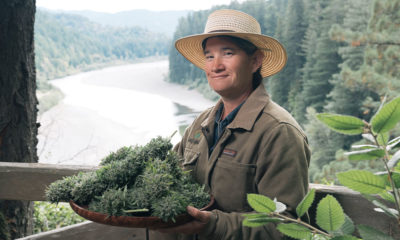
Joint Opinions
Marijuana & Opioids: Sanjay Gupta Tells Us What We Already Knew
America’s most trusted TV doctor tackles cannabis and prescription pain pills in “Weed 4.”
Changing public consciousness can be a funny thing. Messenger can matter more than the message. Sanjay Gupta, the neurosurgeon and CNN’s medical reporter, whose latest installment in his cannabis-friendly series, “Weed,” aired on Sunday, offers an object lesson in this theory.
“Cannabis has given me a reason to live.” Patients turn to pot over pills as they fight opioid addiction with medical marijuana. https://t.co/zqA8QtjFtc
“Weed 4: Pot vs. Pills” with CNN chief medical correspondent Dr. Sanjay Gupta airs at 8 p.m. pic.twitter.com/1XQV4zpRBw
— CNN (@CNN) April 29, 2018
In embracing cannabis as a possible solution to the opiate crisis, as he did in “Weed 4,” Gupta didn’t tell us anything we didn’t already know. He didn’t offer any new research or present existing knowledge in a new or novel way.
But what Gupta did do has immense value. He put what we know — that cannabis is effective in treating chronic pain, and that where cannabis is legal and available, fewer people die from opiate overdoses — on TV, on mainstream cable. He also put the same message in an open letter to Attorney General Jeff Sessions. You could call it a publicity stunt, a way to promote the special to air a few days later, but you must also call it a prominent one, from a prominent messenger with a sizable audience.
And, if the past is any indication, these ideas are now bouncing around the heads of lawmakers, voters, and other people who might otherwise not have listened.
Which means, if the past is any indication, in Trump’s America, the America where opiate overdoses are the leading cause of accidental death, and where opiates are killing more people in Trump country than in other corners of the nation, cannabis may be embraced by the mainstream as a solution.
After publicly dismissing medical marijuana wholesale and criticizing doctors who advocated cannabis as a palliative and treatment, Gupta has devoted the last five years to a sort of apologia tour.
(Here’s a link to the first three segments of “Weed.”)
In the first hour-long documentary, broadcast in 2013, Gupta devotes particular time and attention to the saga of Charlotte Figi, the Colorado child stricken with intractable epilepsy who found that cannabis oil was the only treatment.
At the time, there was significant anecdotal evidence that high CBD treatments helped to reduce the severity and incidences of seizures. Gupta was merely repeating what researchers, cannabis advocates, and relieved parents were telling him and others. But then look what happened after Gupta caught on.
Try to remember what life was like in August of 2013. Recreational marijuana was legal in only two states — and the first retail recreational dispensaries had yet to open in Washington and Colorado. In red states, medical cannabis was a myth. Enter Gupta, and medical marijuana picked up significant momentum almost overnight, and all across the country.
The majority of states with medical marijuana laws on the books passed those laws after 2013 — including throughout the south, supposedly the most conservative corner of the country. You can now access CBD oil, legally, in Texas. All of those low-THC, high-CBD laws — the laws that Gupta pushed for in “Weed” — passed after he aired his special.
Correlation is not causation, but it would take quite the zealot to argue that Gupta’s special, which topped ratings and was watched by millions of people, had no effect on the public consciousness.
Most of those medical-marijuana laws are so strict as to be almost unworkable. Texas’s law is reserved specifically for children with epilepsy. Federal marijuana law still stymies research.
In “Weed 4,” Gupta pushed for rescheduling that would allow cannabis to be researched and prescribed, and also made the obvious point: That, based on data, 10,000 lives or more a year could be saved by allowing pain patients to smoke weed. “Weed” has pulled miracles before; will it work again?
TELL US, have you watched any of Gupta’s TV specials on cannabis?

























